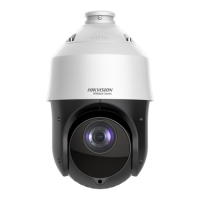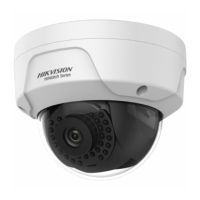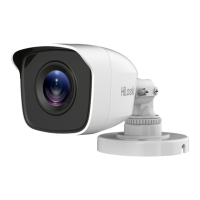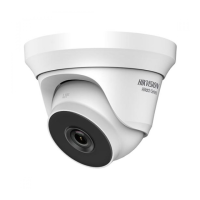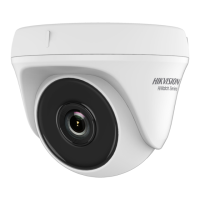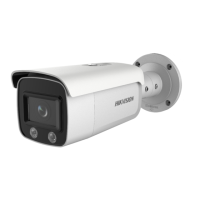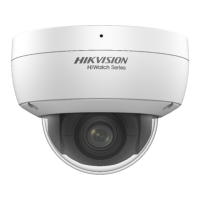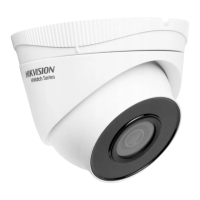Do you have a question about the HIKVISION HWP-N2404IH-DE3 and is the answer not in the manual?
Provides instructions for using and managing the product, subject to change due to updates.
Lists Hikvision's and other trademarks and logos.
States Hikvision's liability and warranty disclaimers.
Introduces the Network Speed Dome as an HD zoom camera for remote monitoring.
Lists key functions like Event and PTZ functions of the device.
Details the recommended specifications for operating the product.
Explains the process of activating the device using different client tools.
Guides activation using a web browser and setting a strong password.
Details device activation and IP modification using SADP tool.
Describes accessing the device through a web browser interface.
Explains the necessary plug-in installation for web browser compatibility.
Outlines methods for recovering the admin password.
Describes the security feature of locking illegal login attempts.
Explains how to control the device's pan, tilt, and zoom functions.
Details how to set and manage predefined camera positions.
Describes configuring the device to automatically move among presets.
Guides on setting the device to move according to recorded patterns.
Explains how to define movement range limits for the device.
Describes setting a base point for the device's initial position.
Details configuring tasks to perform at specific times.
Explains setting an action for the device after inactivity.
Guides on masking specific areas in the live view.
Explains detecting and tracking moving targets in the scene.
Describes resuming PTZ status after a power-off.
Explains setting priority for different PTZ control signals.
Details reducing focusing time with calibration.
Covers parameters for live view display.
Guides on starting and stopping the live view stream.
Explains settings for the image display ratio.
Describes selecting the stream type for live view.
Offers quick access to display, OSD, and audio settings.
Guides on selecting plug-ins for browser compatibility.
Explains adjusting parameters for network conditions.
Describes accessing OSD menu for device configuration.
Details settings for video parameters like stream type and resolution.
Explains main, sub, and other stream types.
Describes selecting content (video/audio) for the stream.
Covers audio parameters like encoding and noise filtering.
Details configuring audio input and encoding.
Explains filtering environmental noise.
Guides on enabling two-way audio communication.
Explains Region of Interest encoding for better video compression.
Guides on defining and setting up ROI regions.
Describes marking object information on the video stream.
Covers parameter settings for image features.
Explains predefined image parameter sets for environments.
Details switching image parameters based on time periods.
Explains mirroring the live view image.
Describes NTSC and PAL video standards.
Guides on setting the maximum zoom value.
Explains customizing On-Screen Display information.
Guides on removing condensation from the lens.
Introduces common storage path configurations.
Details managing memory cards, including encryption.
Guides on configuring FTP server for image saving.
Explains using network servers as network disks.
Describes uploading captured data to the cloud.
Covers manual and scheduled recording operations.
Explains automatic video recording based on schedules.
Guides on starting and stopping manual recording.
Describes searching, playing, and downloading recorded videos.
Explains capturing pictures manually or automatically.
Guides on automatic picture capturing.
Details capturing pictures manually.
Describes viewing and downloading captured pictures.
Introduces basic event configurations and responses.
Explains detecting moving objects and triggering actions.
Guides on detecting area coverage and triggering alarms.
Covers exceptions like network disconnection triggering actions.
Explains external alarms triggering device actions.
Details advanced event detection capabilities.
Guides on detecting abnormal sound conditions.
Explains detecting faces in the scene.
Covers detecting object movement in predefined areas.
Explains detecting objects crossing a predefined line.
Guides on detecting objects entering a predefined area.
Explains detecting objects exiting a predefined area.
Covers detecting removal of objects from an area.
Guides on detecting unattended objects left in an area.
Explains setting valid time periods for device tasks.
Details enabling linkage functions for events or alarms.
Guides on sending alarm information to output devices.
Explains uploading alarm info to FTP, NAS, or memory card.
Guides on sending email notifications for alarm events.
Explains uploading alarm info to a surveillance center.
Describes tracking targets when an alarm event is detected.
Guides on recording video upon alarm detection.
Covers IPv4 and IPv6 parameter settings.
Explains group communication for data transmission.
Guides on automatic detection of network cameras.
Details modifying device ports to avoid conflicts.
Explains accessing devices through specified ports.
Guides on enabling UPnP for automatic port mapping.
Explains manual port mapping configuration.
Details port mapping settings on a router.
Covers setting SNMP for alarm and exception messages.
Explains using DDNS for network access.
Guides on PPPoE auto dial-up connection setup.
Explains using the Hik-Connect app for mobile access.
Guides on enabling Hik-Connect service on the camera.
Details installing and registering for the Hik-Connect app.
Explains adding the camera to the Hik-Connect app.
Guides on connecting the device to a wireless network.
Explains setting Wi-Fi parameters for connection.
Covers registering on ISUP platform for remote management.
Guides on configuring users for ONVIF protocol.
Explains controlling ON/OFF status of network protocols.
Guides on sending alarms to destination IP addresses.
Explains improving latency and reducing packet loss.
Guides on smoothing video data packets for transmission.
Explains Secure Real-time Transport Protocol for encryption.
Guides on viewing device details like model and firmware version.
Explains restoring device parameters to default settings.
Guides on locating and troubleshooting problems using logs.
Explains batch configuration using files.
Guides on exporting diagnose information for troubleshooting.
Explains rebooting the device via browser.
Guides on upgrading the device firmware.
Guides on viewing open source software licenses.
Explains controlling remote live view connection amount.
Covers configuring time zone, synchronization, and DST.
Guides on manually synchronizing device time.
Explains using NTP server for accurate time.
Guides on setting Daylight Saving Time.
Explains connecting to external devices using RS-485.
Covers improving system security with parameter settings.
Guides on setting RTSP and WEB authentication.
Explains filtering IP addresses for access control.
Guides on enabling encrypted transmission for remote access.
Explains analyzing security logs for intrusion and events.
Guides on improving network delay by setting data sending priority.
Explains authenticating user permission using IEEE 802.1X.
Guides on managing certificates and sending alarms.
Explains logging out after inactivity.
Guides on setting user accounts and permissions.
| Brand | HIKVISION |
|---|---|
| Model | HWP-N2404IH-DE3 |
| Category | Security Camera |
| Language | English |
